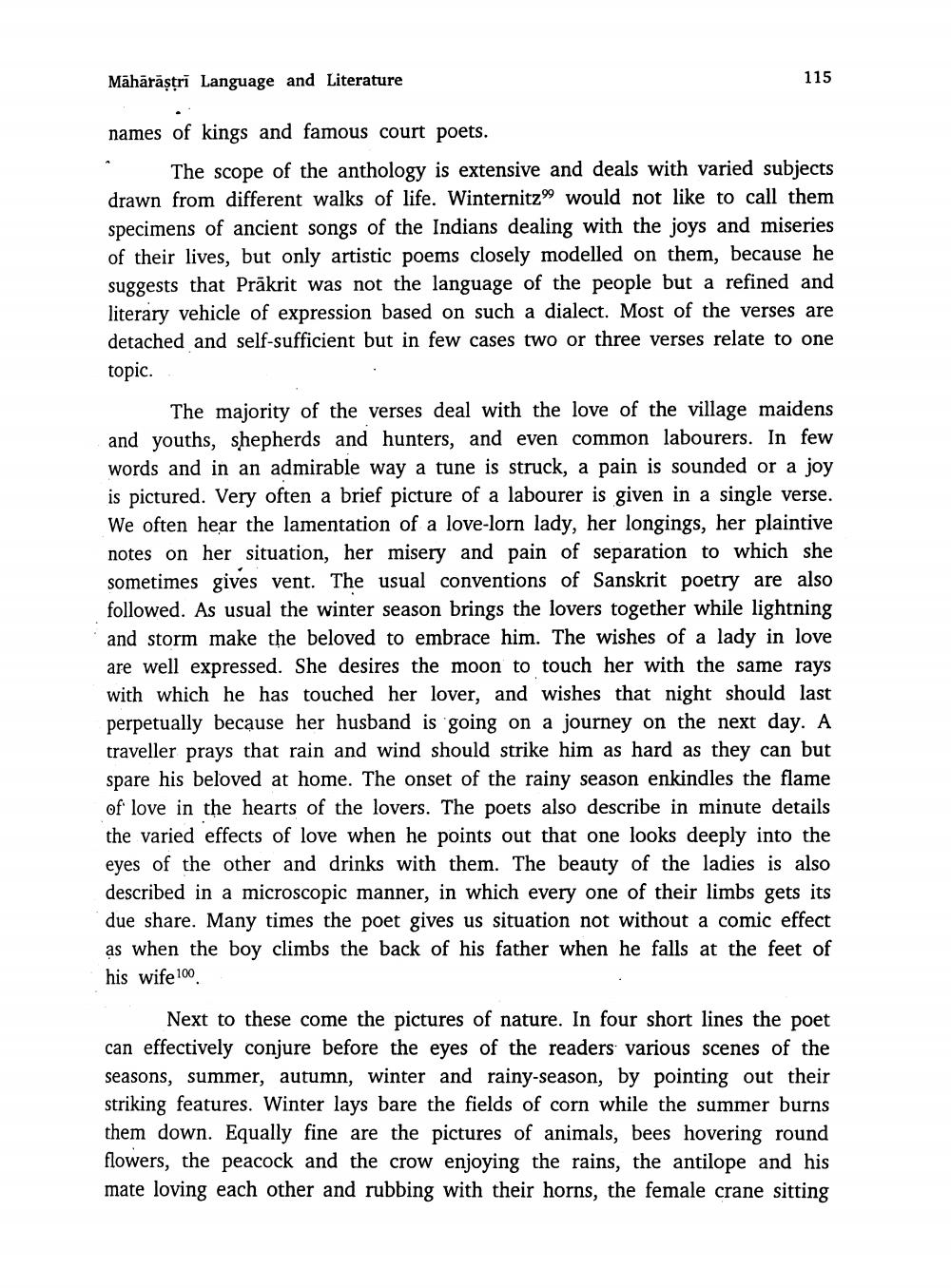________________
Māhārāştri Language and Literature
115
names of kings and famous court poets.
The scope of the anthology is extensive and deals with varied subjects drawn from different walks of life. Winternitzo would not like to call them specimens of ancient songs of the Indians dealing with the joys and miseries of their lives, but only artistic poems closely modelled on them, because he suggests that Prākrit was not the language of the people but a refined and literary vehicle of expression based on such a dialect. Most of the verses are detached and self-sufficient but in few cases two or three verses relate to one topic.
The majority of the verses deal with the love of the village maidens and youths, shepherds and hunters, and even common labourers. In few words and in an admirable way a tune is struck, a pain is sounded or a joy is pictured. Very often a brief picture of a labourer is given in a single verse. We often hear the lamentation of a love-lorn lady, her longings, her plaintive
on her situation, her misery and pain of separation to which she sometimes gives vent. The usual conventions of Sanskrit poetry are also followed. As usual the winter season brings the lovers together while lightning and storm make the beloved to embrace him. The wishes of a lady in love are well expressed. She desires the moon to touch her with the same rays with which he has touched her lover, and wishes that night should last perpetually because her husband is going on a journey on the next day. A traveller prays that rain and wind should strike him as hard as they can but spare his beloved at home. The onset of the rainy season enkindles the flame of love in the hearts of the lovers. The poets also describe in minute details the varied effects of love when he points out that one looks deeply into the eyes of the other and drinks with them. The beauty of the ladies is also described in a microscopic manner, in which every one of their limbs gets its due share. Many times the poet gives us situation not without a comic effect as when the boy climbs the back of his father when he falls at the feet of his wife 100
Next to these come the pictures of nature. In four short lines the poet can effectively conjure before the eyes of the readers various scenes of the seasons, summer, autumn, winter and rainy-season, by pointing out their striking features. Winter lays bare the fields of corn while the summer burns them down. Equally fine are the pictures of animals, bees hovering round flowers, the peacock and the crow enjoying the rains, the antilope and his mate loving each other and rubbing with their horns, the female crane sitting




